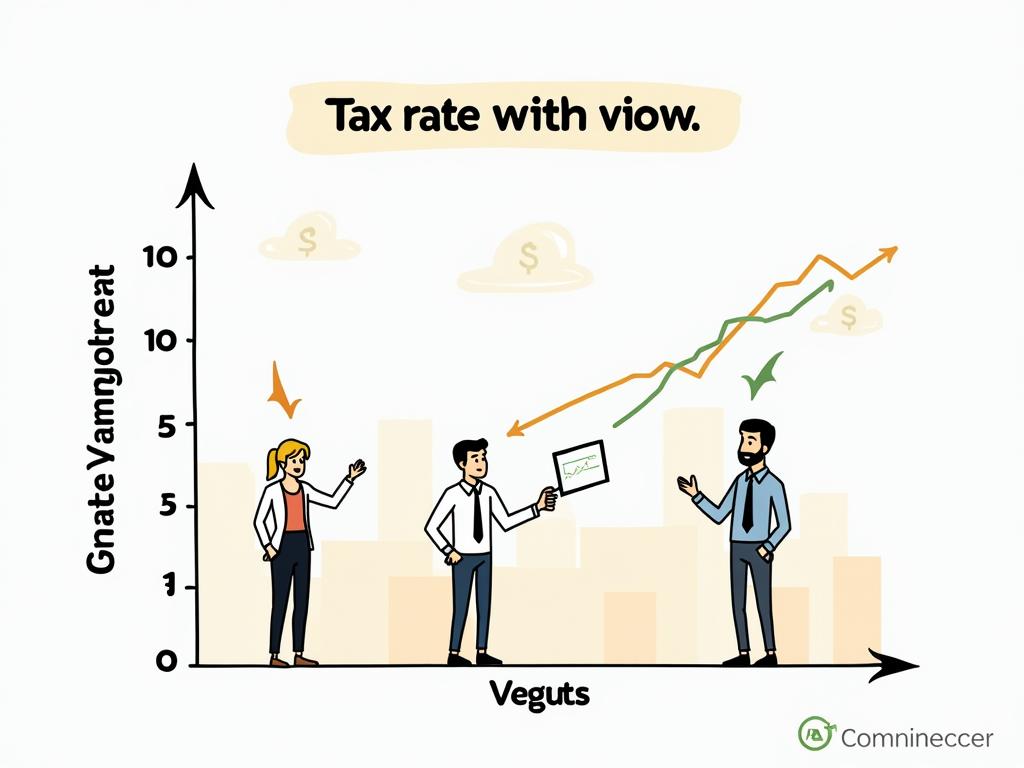
VAT Audits in Germany: How to Prepare and What to Expect
Reading time: 12 minutes
Table of Contents
- Introduction: The Reality of German VAT Audits
- Understanding the German VAT System
- What Triggers a VAT Audit?
- The VAT Audit Process: Step by Step
- Preparing for a VAT Audit: Your Strategic Approach
- Essential Documentation: What Auditors Want to See
- Common Pitfalls and How to Avoid Them
- Post-Audit Procedures: Responding to Findings
- Digital Transformation of Tax Audits in Germany
- Conclusion: Turning Compliance into Competitive Advantage
- Frequently Asked Questions
Introduction: The Reality of German VAT Audits
Ever found yourself breaking into a cold sweat at the mere mention of a German tax audit? You’re not alone. The German VAT system—Umsatzsteuer in German—is renowned for its complexity and the thoroughness of its enforcement.
Let’s get one thing straight: VAT audits in Germany aren’t about catching you out; they’re about ensuring compliance in a system that relies on proper functioning for national economic health. Yet, the prospect can be daunting, especially for foreign businesses operating in Germany or German businesses navigating an increasingly complex regulatory landscape.
Well, here’s the straight talk: Successful navigation of a VAT audit isn’t about perfection—it’s about strategic preparation, understanding what auditors are looking for, and having systems in place that demonstrate your commitment to compliance.
Consider this: In 2022, German tax authorities recovered approximately €13.2 billion through tax audits, with VAT irregularities accounting for a significant portion. The stakes are high, but so are the opportunities to strengthen your business operations through proper preparation.
Understanding the German VAT System
Before diving into audit specifics, let’s establish a solid foundation. Germany operates a dual-rate VAT system:
- Standard rate of 19%: Applied to most goods and services
- Reduced rate of 7%: Applied to essential items like food, books, and public transportation
The German VAT system functions on the principle of Vorsteuerabzug (input tax deduction), where businesses collect VAT on sales (output tax) and can deduct VAT paid on purchases (input tax), remitting only the difference to tax authorities.
What makes the German system particularly complex is its strict documentation requirements and specific rules for different transaction types, including:
- Intra-EU transactions
- Exports to non-EU countries
- Reverse charge mechanisms
- Special rules for digital services
As Dr. Manfred Schmidt, former head of the Federal Central Tax Office, puts it: “The German VAT system demands precision. It’s not about avoiding taxes but documenting correctly why specific tax treatments apply to each transaction.”
Quick Case Study: The Costly Misclassification
Consider a mid-sized German publishing company that produced both books (7% VAT) and digital content (19% VAT). During an audit, authorities found that the company had been applying the reduced 7% rate to all its products, including digital versions. The result? A retrospective VAT assessment of €245,000 plus interest for the past four years, significantly impacting their cash flow and profitability.
The lesson? Understanding classification rules isn’t just about compliance—it’s about financial survival.
What Triggers a VAT Audit?
Contrary to popular belief, VAT audits in Germany aren’t always random. Several factors can place your business under the tax authority’s microscope:
Systematic Selection Factors
- Size and industry: Larger businesses and certain industries (hospitality, construction, retail) face more frequent audits
- Consistent VAT refund positions: Regularly claiming VAT refunds rather than making payments
- Significant fluctuations in reported turnover or VAT payments
- Discrepancies between VAT returns and other tax filings
- Industry-specific risk factors: Operating in sectors known for VAT compliance issues
Red Flags That Attract Attention
Tax authorities employ sophisticated data analysis to identify patterns that may indicate non-compliance:
- Frequent amendments to VAT returns
- Significant input VAT claims without corresponding business development
- Deviations from industry averages in key metrics
- Missing or late VAT returns
- Tips from whistleblowers or information from other investigations
One finance director I spoke with shared this insight: “After we expanded into EU sales, we suddenly found ourselves selected for an audit. We later learned that our sudden increase in zero-rated exports had triggered a review. It wasn’t that we’d done anything wrong—it was simply that our business model had changed in a way that warranted verification.”
The VAT Audit Process: Step by Step
Understanding what happens during a German VAT audit removes much of the anxiety. Here’s what to expect:
Initial Notification
The process begins with a formal written notification (Prüfungsanordnung) that typically includes:
- The audit’s scope and tax periods covered (usually 3-5 years)
- Types of taxes being examined
- Documentation requirements
- Proposed start date
- Contact information for the assigned auditor
You’ll generally receive this notice 2-4 weeks before the audit begins, giving you time to prepare. In some cases, particularly when fraud is suspected, audits may commence with little or no prior notice.
Preliminary Meeting
Before diving into records, the auditor will typically schedule an opening meeting to:
- Introduce themselves and explain their approach
- Understand your business operations and accounting systems
- Establish logistics (workspace, access to records, key contacts)
- Set expectations regarding timeframes and processes
This meeting is crucial for setting the tone of the audit. Being cooperative while establishing clear procedures helps create a professional working relationship with the auditor.
Field Work Phase
The core of the audit involves the auditor examining your records, which may include:
- Reviewing VAT returns and supporting calculations
- Examining sales and purchase invoices
- Verifying correct application of VAT rates
- Checking documentation for international transactions
- Reconciling VAT accounts with financial statements
- Testing internal control systems
This phase can last from a few days to several months, depending on your business complexity and the issues identified.
Exit Discussion and Report
The audit concludes with:
- An exit meeting where preliminary findings are discussed
- A formal audit report (Prüfungsbericht) detailing findings and proposed adjustments
- An opportunity for you to respond before assessment notices are issued
Remember: The exit discussion is a crucial opportunity to clarify misunderstandings before they become formal findings.
Preparing for a VAT Audit: Your Strategic Approach
Preparation is where audit success begins. Consider these strategic approaches:
Proactive Preparation Strategies
- Conduct a self-audit: Systematically review your VAT processes and past returns, ideally with professional assistance
- Organize documentation logically: Create clear filing systems that align with how auditors typically review records
- Prepare transaction summaries: Develop reports that explain unusual transactions or complex VAT treatments
- Review previous audit findings: Ensure any issues identified in prior audits have been properly addressed
- Brief key staff: Ensure accounting personnel understand their roles during the audit process
Setting Up Your “Audit Room”
Create a dedicated space for the auditor with:
- Adequate workspace, power outlets, and internet access if needed
- Organized files and documentation readily accessible
- A point person who can address questions and requests
- Defined procedures for document requests and responses
This approach not only facilitates the audit but demonstrates your professionalism and commitment to compliance.
Practical Roadmap for Audit Readiness
- First 48 Hours After Notification
- Notify key stakeholders (management, accounting, tax advisors)
- Schedule an internal planning meeting
- Appoint an audit coordinator
- 1-2 Weeks Before Audit
- Complete self-review of high-risk areas
- Organize documentation according to audit scope
- Prepare summaries of complex transactions
- Brief staff on audit protocols
- Days Before Audit
- Finalize workspace setup
- Confirm availability of key personnel
- Review final preparation checklist
- Conduct final briefing with tax advisors
Essential Documentation: What Auditors Want to See
German VAT auditors are particularly focused on documentation. Here’s what you need to have ready:
Core Documentation Requirements
- VAT returns and workpapers: All submitted returns and supporting calculations
- Sales and purchase invoices: Must meet strict German invoice requirements
- Bank statements and payment records: Showing VAT payments and receipts
- Contracts: For ongoing business relationships and special arrangements
- International transaction documentation: Including proof of transport for zero-rated supplies
- Accounting records: General ledger, journals, and trial balances
Digital Records Requirements
With Germany’s increasing digitalization of tax processes, electronic records must be:
- Available in a machine-readable format
- Compliant with GoBD (Grundsätze zur ordnungsmäßigen Führung und Aufbewahrung von Büchern, Aufzeichnungen und Unterlagen in elektronischer Form sowie zum Datenzugriff) standards
- Accessible through standard data analysis tools
- Complete and unmodified
Pro Tip: The proper preparation of structured data files can significantly reduce audit duration and complexity. Consider working with IT specialists familiar with German data extraction formats to prepare standardized audit files.
Common Pitfalls and How to Avoid Them
Based on discussions with tax professionals and business owners who’ve navigated German VAT audits, here are the most common compliance issues and how to address them:
| Common Issue | Typical Penalty | Prevention Strategy | Risk Level |
|---|---|---|---|
| Incorrect invoice format | Denial of input tax credit | Implement automated invoice verification system | High |
| Missing export documentation | 19% VAT assessed on “export” sales | Create standardized documentation checklist for each transaction type | Very High |
| Incorrect VAT rate application | Differential assessment plus interest | Regular staff training and periodic independent reviews | Medium |
| Late VAT filings | Penalties up to 10% of tax due | Implement compliance calendar with automated alerts | Low |
| Improper reverse charge application | Potential double taxation situations | Document verification process for all cross-border transactions | High |
Case Study: The Travel Agency Timing Mistake
A Berlin-based travel agency specializing in luxury European tours faced a significant VAT assessment after an audit revealed they were accounting for VAT at the wrong time. Under German law, travel agencies operate under the special “margin scheme,” where VAT is due when services are rendered, not when payments are received or invoices issued.
The agency had been declaring VAT based on invoice dates rather than travel dates. This timing difference resulted in a €78,000 VAT adjustment plus interest. By implementing a dual-tracking system that monitored both invoice dates and service delivery dates, they were able to correct their processes and prevent future issues.
Addressing Specific Compliance Challenges
Challenge 1: Cross-Border Transactions
Intra-EU transactions require particular attention to:
- Verifying VAT ID numbers of EU customers
- Maintaining proper evidence of goods movements
- Correctly applying reverse charge mechanisms
- Filing accurate EC Sales Lists (ZM forms in Germany)
Solution: Implement a verification process for each new EU customer, including validation of VAT numbers through VIES (VAT Information Exchange System) and documentation protocols for transportation evidence.
Challenge 2: Digital Record-Keeping Requirements
German authorities increasingly expect:
- Proper GoBD-compliant electronic records
- Digital access to accounting data
- Ability to provide data in standardized formats
Solution: Invest in GoBD-compliant accounting software and establish clear data retention policies. Periodically test your ability to extract data in the formats tax authorities might request.
Post-Audit Procedures: Responding to Findings
The conclusion of field work doesn’t mean the audit is over. Here’s how to navigate the final stages effectively:
Reviewing the Audit Report
When you receive the preliminary findings:
- Review them thoroughly with your tax advisor
- Identify any factual errors or misinterpretations
- Gather additional supporting documentation for contested points
- Prioritize issues based on financial impact and defensibility
Response Strategies
You have several options for addressing audit findings:
- Accept and implement: If findings are correct, acknowledge them and adjust your processes
- Request clarification: When findings are unclear, seek detailed explanations before responding
- Present counter-evidence: Provide documentation or legal arguments supporting your position
- Negotiate partial settlement: Sometimes a compromise position is possible
- Formal appeal: If significant disagreements remain, consider the appeals process
Remember: The tone of your response matters. Maintain professionalism while clearly articulating your position.
Digital Transformation of Tax Audits in Germany
German tax authorities are rapidly modernizing their approach to audits, with significant implications for businesses:
Current Digital Initiatives
- Standard Audit File for Tax (SAF-T): Standardized electronic format for tax data
- E-invoicing requirements: Moving toward mandatory electronic invoicing
- Real-time reporting: Gradual shift toward continuous transaction monitoring
- Data analytics: Sophisticated tools to identify discrepancies and patterns
According to Thomas Weber, VAT technology specialist at a leading German accounting firm: “We’re seeing a fundamental shift in how audits are conducted. Rather than sampling transactions, tax authorities increasingly analyze entire datasets, identifying patterns and anomalies that would be impossible to detect manually.”
Future-Proofing Your VAT Compliance
To prepare for this digital shift:
- Invest in tax technology that supports data extraction in standardized formats
- Implement continuous monitoring rather than periodic reviews
- Ensure your ERP system can adapt to changing compliance requirements
- Train staff on digital documentation best practices
Pro Tip: Consider conducting a “digital readiness assessment” of your VAT processes to identify gaps in your ability to meet evolving requirements.
Conclusion: Turning Compliance into Competitive Advantage
A German VAT audit doesn’t have to be a crisis. With proper preparation and understanding, it can actually become an opportunity to strengthen your business operations.
The most successful businesses approach German VAT compliance not as a burdensome obligation but as an integral part of their operational excellence. They recognize that the same processes that ensure VAT compliance—meticulous record-keeping, strong internal controls, and careful transaction monitoring—also deliver valuable business insights and reduce overall risk.
Remember these key takeaways:
- Strategic preparation prevents most audit problems before they begin
- Documentation quality determines audit outcomes more than any other factor
- Digital transformation is changing the audit landscape—adapt proactively
- Professional guidance can transform compliance from a cost center to a value driver
As you implement the strategies in this guide, focus not just on surviving your next VAT audit, but on building resilient tax processes that support your business growth while minimizing compliance risks.
The right preparation isn’t just about avoiding problems—it’s about creating scalable, resilient business foundations that turn regulatory requirements into competitive advantages.
Frequently Asked Questions
How far back can German tax authorities audit my VAT records?
The standard limitation period for German VAT audits is four years from the end of the calendar year in which the tax return was filed. However, this extends to ten years in cases of tax evasion or fraud. If you haven’t filed returns, there’s no limitation period. Most routine audits cover 3-5 years, but authorities have discretion to extend this timeframe if they identify significant issues or patterns of non-compliance.
Can I postpone a VAT audit if I’m not ready?
Yes, but with significant limitations. You can request a postponement with proper justification (such as key staff illness, major business disruption, or genuinely inadequate preparation time). Submit your request in writing immediately after receiving the audit notice, explaining the specific circumstances and proposing an alternative date. However, postponements are granted at the tax authority’s discretion and are typically limited to a few weeks. Repeated postponement requests may raise suspicions and are generally not advised.
What happens if the auditor discovers serious errors or potential fraud?
If an auditor identifies potential fraud or deliberate evasion, several things can happen: The audit scope may expand to cover additional years and taxes; the case may be referred to the tax fraud investigation department (Steuerfahndung); criminal procedures might be initiated alongside the tax assessment process. In such situations, immediately consult specialized legal counsel before making any statements or admissions. The distinction between unintentional errors and deliberate evasion is crucial, as the latter can result in criminal penalties including fines and, in extreme cases, imprisonment. Voluntary disclosure before the audit can sometimes mitigate consequences, but only if made properly and before you’ve been notified of an upcoming audit.


